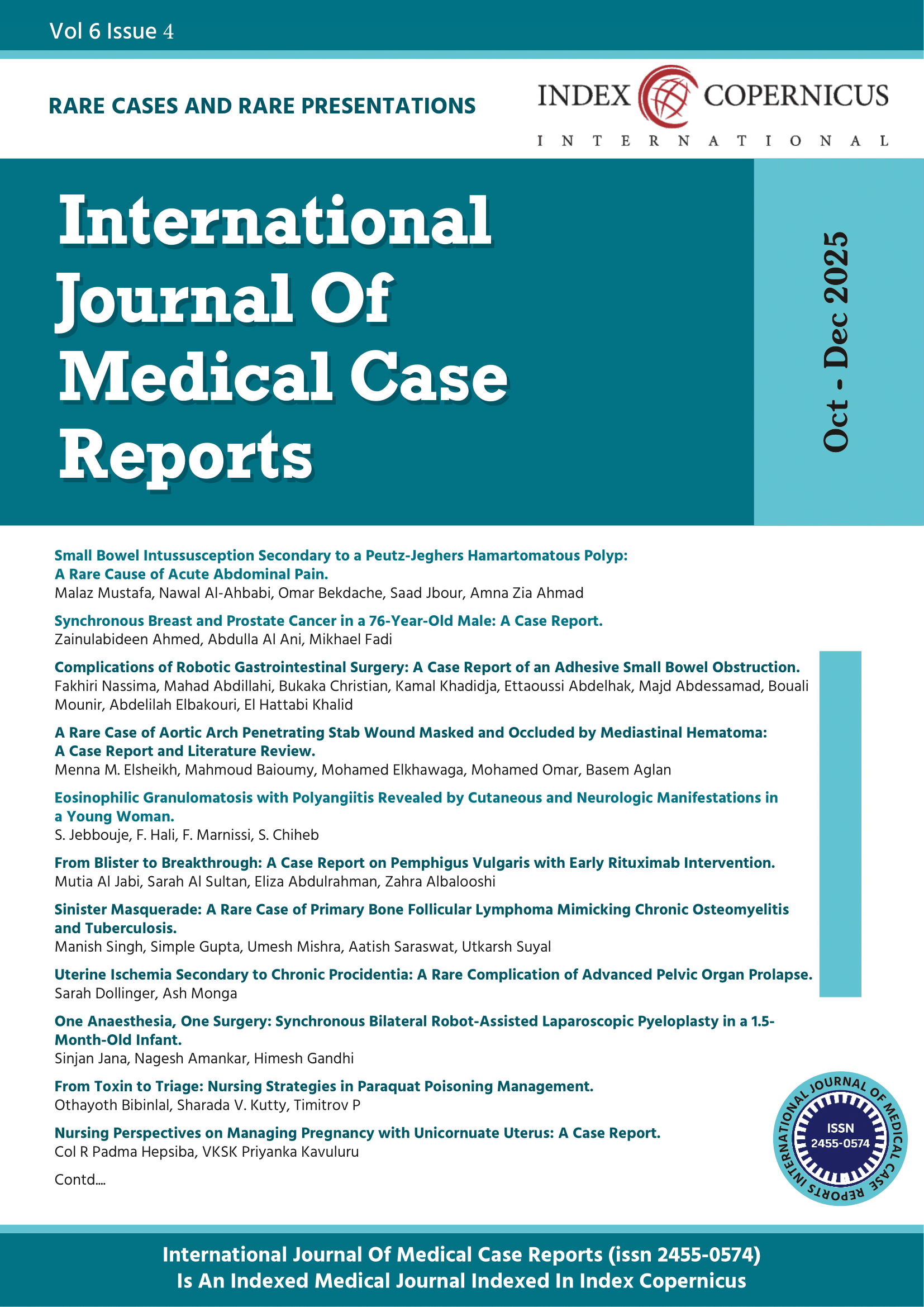Small Bowel Intussusception Secondary to a Peutz-Jeghers Hamartomatous Polyp: A Rare Cause of Acute Abdominal Pain
Main Article Content
Abstract
Background:
Intussusception in adults is an uncommon cause of intestinal obstruction, differing from pediatrics cases where idiopathic aetiologies predominate. In adults, it is usually associated with an underlying pathological lead point, frequently neoplastic. Peutz-Jeghers syndrome (PJS), an autosomal dominant disorder characterized by mucocutaneous pigmentation and hamartomatous gastrointestinal polyps, is a rare but important cause. Although PJS predisposes to both benign and malignant neoplasms, small
bowel intussusception secondary to hamartomatous polyps is infrequently reported.
Case Report:
We present the case of a 27-year-old male with no significant past medical history who presented with progressive severe abdominal pain, nausea, and a single episode of vomiting. Physical examination revealed a vague abdominal mass, and laboratory investigations demonstrated leucocytosis and mild lactic acidosis. Contrast-enhanced abdominal CT showed a whirlpool sign and mural hematoma suggestive of volvulus or intussusception. Emergency laparoscopy converted to mini-laparotomy revealed a 20–30 cm ischemic small bowel segment with intussusception approximately 140 cm proximal to the ileocecal junction. A firm intraluminal polypoid lesion served as the lead point. Segmental small bowel resection with primary anastomosis was performed. Histopathological analysis confirmed a Peutz-Jeghers-type hamartomatous polyp without dysplasia or malignancy. The patient had an uneventful postoperative recovery and was discharged in stable condition.
Conclusion:
This case highlights the diagnostic and therapeutic challenges of small bowel intussusception in adults. Although rare, PJS-related intussusception should be considered in young adults presenting with nonspecific abdominal pain and bowel obstruction. Early recognition with cross-sectional imaging and prompt surgical intervention are essential to prevent ischemia and improve outcomes.Surveillance strategies remain critical in patients with PJS to prevent recurrence and other complications.
